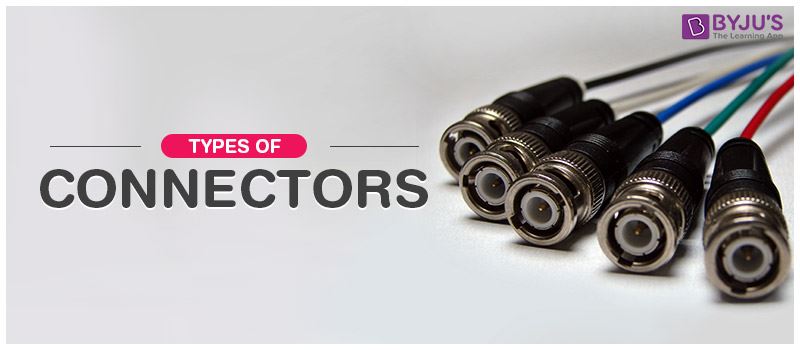
Various types of connectors are used to perform one particular function that is to connect or disconnect the circular path of the electric current. Depending upon the various functions of connectors such as design and durability, ease of connection, mating type, insulation between pins, etc., it is designed to perform in extreme conditions such as prevention from dirt, water, contaminants, extreme temperatures, and vibrations, etc. Connectors are classified into various types based on function, level, and type of termination. In this article, let us learn about various types of connectors.
Classification of Connectors Based on Connector Level:
- Box-to-box or input/output
- Wire-to-board
- Chip-to-package
- Package-to-board
- PC board-to-board
Classification of Connectors Based on Connector Function:
- Terminal Block
- Binding Post
- Plug and socket
- Rack and Panel
- Blade
- Ring and Spade
Classification of Connectors Based on Connector Level Termination:
- Insulation Displacement
- Crimping
Terminal Block
In this, more than one wire is connected to one terminal. It is used in housing and lack of protection makes it inefficient in comparison to others. Its connection is also categorized as
- Printed circuit board terminal blocks (PCB)
- Pluggable terminal blocks
- Multiple terminal connectors (MTC)
- Barrier Strips
Binding Post
These types are used in various audio and electronic testing devices. In these, bare wires are connected to a post which is fastened with screws and the opposite end is connected to terminals, plugs, and pins.
Plug and Socket
Here one plug is connected to one or many pins. These make connections easy and use no tools. Plug and Socket connectors are used in many electronics for handling audio and video such as USB, HDMI, network, computing, etc.
Rack and Panel
This connects electronic parts that can be removed with stationary pieces of equipment, where space and connection’s reliability is important. It has 3 types namely:
- Rack and panel
- Cable to cable
- Cable to panel
These are used in appliances like home stereo systems, modems, printers, etc
Blade
This connects single wires to blade receptacles using conductive blades which are flat. These are attached to connecting wires and are used in thermostats and speakers.
Ring and Spade
Here, the connection is sandwiched between a screw and a threaded post. It enables easy connections that can be removed because the lock is partially closed.
Insulation Displacement Connectors (IDC)
This connects insulated wire and does not use any pre-stripping of insulation. When electrical insulators are inserted, a series of blades cut the insulation. These help to lower the current handling capabilities.
Crimping
These create a connection between connectors and wires which can be separated later. These are ideal for safety, easy-to-use, cost-effectiveness
These were some types of connectors if you wish to know more, download BYJU’S The Learning App
RELATED ARTICLES:
| Components of Basic Electrical Circuit | Electrical Conductors |
Frequently Asked Questions – FAQs
What is an electrical connector?
An electrical connector is an electromechanical device mainly used to connect electrical conductors and establish an electrical circuit.
What are the types of connectors classified based on connector termination?
Connectors classified based on connector termination are:
- Insulation Displacement
- Crimping
What is crimping?
Crimping creates a connection between connectors and wires which can be separated later.
What are insulation displacement connectors?
Give some examples where rack and panel is used?
Rack and panel are used in appliances like stereo systems, modems, and printers.

Comments